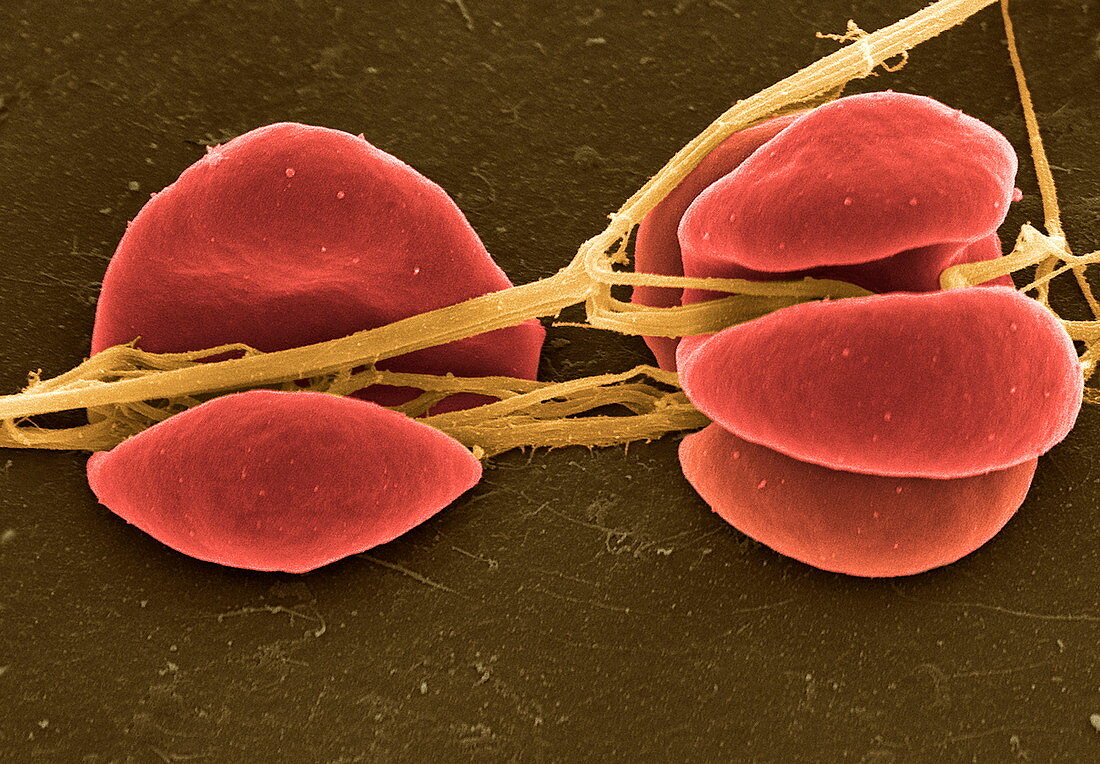Blood clot,SEM
Bildnummer 11869836

| Blood clot. Coloured scanning electron micrograph (SEM) of fibrin strands immobilising and,in the process,distorting red blood cells (RBCs). RBCs,or erythrocytes,make up 99% of the cells in blood. They carry oxygen around the body and their unique surface shape (biconcave) maximises the amount carried. If damage occurs to a blood vessel,a protein found in blood called fibrinogen will be converted to fibrin,an insoluble protein. Fibrin molecules make a tangled net of fibres which immobilises the fluid portion of blood and also traps the RBCs. Along with the action of platelets,this is sufficient to prevent a dangerous loss of blood. Magnification not known | |
| Lizenzart: | Lizenzpflichtig |
| Credit: | Science Photo Library / Gschmeissner, Steve |
| Bildgröße: | 2400 px × 1666 px |
| Modell-Rechte: | nicht erforderlich |
| Eigentums-Rechte: | nicht erforderlich |
| Restrictions: | - |
Preise für dieses Bild ab 15 €
Universitäten & Organisationen
(Informationsmaterial Digital, Informationsmaterial Print, Lehrmaterial Digital etc.)
ab 15 €
Redaktionell
(Bücher, Bücher: Sach- und Fachliteratur, Digitale Medien (redaktionell) etc.)
ab 30 €
Werbung
(Anzeigen, Aussenwerbung, Digitale Medien, Fernsehwerbung, Karten, Werbemittel, Zeitschriften etc.)
ab 55 €
Handelsprodukte
(bedruckte Textilie, Kalender, Postkarte, Grußkarte, Verpackung etc.)
ab 75 €
Pauschalpreise
Rechtepakete für die unbeschränkte Bildnutzung in Print oder Online
ab 495 €
